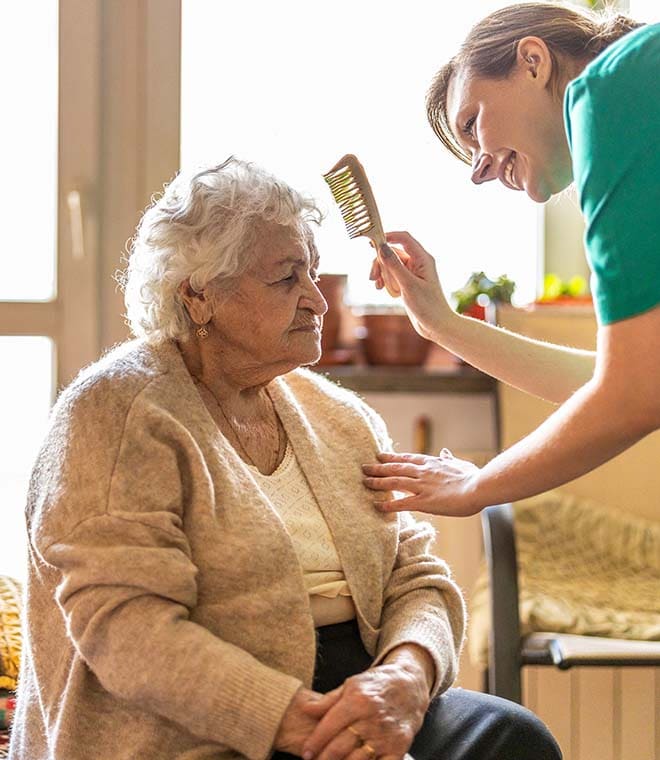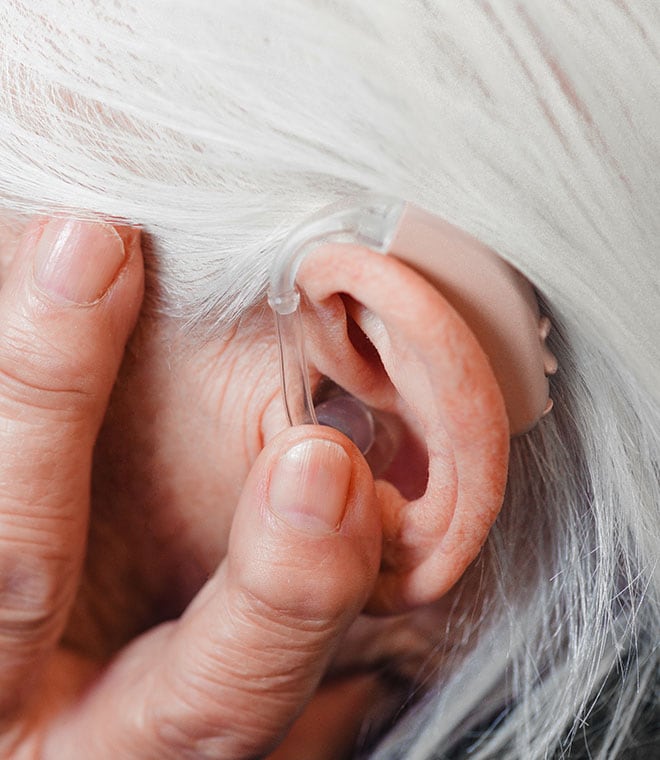Health
Senior eye health: Facts about glaucoma, cataracts and macular degeneration
By Jenilee Matz, MPH Jan 25, 2024 • 14 min.
Vision changes are common with age. At first, you may only need glasses to see things up close, or you may have trouble telling the difference between certain colors. But eye problems can become more serious, impairing your ability to drive a car safely, keeping you from reading a book and increasing your risk of falls. Here are some things you need to know about eye disease in your senior years.
Age-related eye disease basics
Serious eye problems that often affect seniors include macular degeneration, glaucoma and cataracts. These eye diseases are among the leading causes of low vision and blindness in adults, and the risk of them goes up with age. Eye diseases often don't cause symptoms in the early stages. By the time you notice vision loss, it often cannot be reversed. This is why getting regular checkups from your eye healthcare provider is a must. A comprehensive eye exam can detect eye disease in its early stages before vision loss occurs. This exam should include dilating your pupils (the black center of your eyes) so that the inside of your eyes can be checked for signs of disease. Your healthcare provider will tell you how often you need this eye exam, based on your age, health and risk of developing eye problems.
What is age-related macular degeneration?
Age-related macular degeneration is a condition that damages the macula (the center of the retina at the back of the eye), which is needed for sharp, detailed central vision. Macular degeneration by itself doesn't lead to complete blindness, but when central vision becomes impaired, driving, reading, recognizing faces and doing other everyday activities becomes difficult. This condition can affect one or both eyes.
Macular degeneration causes
Age is the main culprit of causing age-related macular degeneration. It's most likely to develop at age 55 or later, but it can happen earlier. Other factors, including smoking, eating a diet high in saturated fat, being overweight, having a family history of the condition and being Caucasian, increase your risk. Certain medical conditions, such as heart disease and high cholesterol, also raise your risk.
There are two types of age-related macular degeneration:
- Dry macular degeneration causes you to gradually lose central vision. About 4 in 5 people with macular degeneration have this kind. This condition happens when parts of the macula get thinner with age and tiny proteins, called drusen, form.
- Wet macular degeneration is less common, but it causes vision loss to happen more quickly. It occurs when abnormal blood vessels develop under the retina. These blood vessels may leak blood or other fluids, which can scar the macula.
Symptoms of macular degeneration
Macular degeneration symptoms often don't start until some degree of vision loss has occurred. In fact, blurred vision, especially in the center of your vision, is often the first symptom. The blurred area may grow larger in time. You may also notice blank spots in your central vision, and items may not appear as bright as they used to.
Macular degeneration test
Only a comprehensive dilated eye exam can detect macular degeneration. See your eye healthcare provider as often as recommended so they can do exams and look for early signs of macular degeneration.
Macular degeneration treatments and macular degeneration vitamins
At this time, there is no way to treat the dry form of age-related macular degeneration in its early stages. Adopting healthy lifestyle habits, including getting regular exercise, not smoking and eating a nutritious diet rich in green leafy vegetables and fish, may help you keep your vision longer.
People with intermediate or late stage age-related macular degeneration may benefit from taking a specific combination of vitamins and minerals. A nutritional supplement formulation containing vitamin C, vitamin E, zinc, copper, lutein and zeaxanthin seems to help slow the progression of this eye disease. Before you take any nutritional supplement, talk to your eye healthcare provider. They can recommend a supplement that's right for you.
In advanced neovascular age-related macular degeneration, a type of wet age-related macular degeneration, your healthcare provider may try different treatments to stop further vision loss. These may include antivascular endothelial growth factor (anti-VEGF) medications to help stop the growth of abnormal blood vessels, laser treatment of the retina or laser surgery on the abnormal blood vessels.
What is glaucoma?
Glaucoma is a group of diseases that damage the eye's optic nerve (more than 1 million nerve fibers that connect the retina to the brain). It can lead to vision loss and even blindness. The condition can develop in one or both eyes.
What causes glaucoma?
Each type of glaucoma has a unique cause. There are two main forms:
- Primary open-angle glaucoma is the most common kind of glaucoma. It happens when the eye doesn't drain fluid well, so the fluid builds up. This increases the pressure in the eye, which harms the optic nerve. This type of glaucoma tends to be painless and not cause vision loss at first. If left untreated, glaucoma symptoms may appear. You may notice peripheral or side vision loss, or it may feel like you're looking through a tunnel.
- Narrow-angle glaucoma (also called angular-closure glaucoma or closed-angle glaucoma) happens when the iris (colored circle around the pupil that's responsible for allowing light into the eye) is very close to the drainage angle in the eye. The iris can eventually block the drainage angle. This causes the pressure in the eye to rise very quickly. Without prompt treatment, you can lose your vision. If you have symptoms of this type of glaucoma, call your eye healthcare provider. Signs of glaucoma include sudden blurry vision, severe eye pain, headache, seeing rainbow-colored rings or halos around lights, nausea and vomiting.
Risk factors for glaucoma include being age 60 or older, being Hispanic or African American (African Americans have an increased risk at age 40 and older), having a family history of glaucoma and having certain other eye problems or eye injuries. Some medical issues, such as high blood pressure, diabetes and heart disease, and certain medications, including steroids, may also raise your risk.
Although glaucoma is more common with increasing age, it can develop at any time. One type of glaucoma, known as congenital glaucoma, occurs in infants who are born with defects that prevent the normal drainage of fluid from the eye.
Glaucoma testing
Glaucoma can be detected through a comprehensive, dilated eye exam. See your eye healthcare provider as often as recommended for eye health screenings.
Glaucoma treatments
Narrow-angle glaucoma is a medical emergency. Severe vision loss can happen quickly, so swift treatment is important. Your eye healthcare provider will likely give you medication to bring down the pressure in your eyes quickly. You may also need a laser procedure to drain the eye.
While there's no cure for open-angle glaucoma and no way to restore lost vision, starting glaucoma treatment can help prevent further vision loss. The focus of treatment is to lower eye pressure and prevent damage to the optic nerve. Common early treatment often begins with prescription glaucoma eye drops. These medications work by helping the eye's fluid to drain better and/or decreasing the amount of fluid made by the eye. In more advanced cases, laser trabeculoplasty, to drain fluid from the eye, or glaucoma surgery, to make a new opening to remove fluid from the eye, may be recommended.
What are cataracts?
Cataracts are the leading cause of vision loss worldwide. The lens of the eye (part of the eye that helps to focus light on the retina) is normally clear. A cataract is the clouding of the lens. This can affect one or both eyes and can lead to partial or total blindness.
What causes cataracts?
The lens, which is responsible for focusing light onto the retina and for adjusting focus, consists of mostly water and protein. The protein is in specific parts of the eye, so that keeps the lens clear and allows light in. As we age, some protein may clump together and cloud the lens. This is a cataract. Over time, the cataract can grow and further impair eyesight.
Cataracts are very common and occur due to aging. By 80 years of age, more than half of all Americans have had a cataract or cataract surgery. There may also be other causes of cataract, including smoking and having diabetes.
There are three main kinds of cataracts:
- Nuclear cataracts happen in the center of the lens. The center of the eye may change from clear to yellow or brown
- Cortical cataracts occur in the edge of the lens and may look like a wedge
- Posterior subcapsular cataracts affect the back outer layer of the lens; this type of cataract tends to progress more quickly
A congenital cataract is a cataract that has been present since birth. This type of cataract isn't related to aging.
Symptoms of cataracts
Cataract symptoms depend on the size and location of the cloudy area. Signs of a cataract can include blurry vision, increased sensitivity to glare, seeing halos around lights, dulled-looking colors, decreased night vision and double vision.
Cataracts can only be detected through a comprehensive dilated eye exam, so see your eye healthcare provider for a checkup as often as they recommend.
Cataract treatment
Early cataract symptoms may improve with a new glasses prescription, magnifying lenses, brighter lighting or anti-glare lenses.
If these methods don't help, your eye healthcare provider may say you should have your cataracts removed. Cataract surgery is a common procedure for treating cataracts and is usually very successful. In fact, 9 out of 10 people have better vision after cataract surgery.
All surgeries come with the risk of complications, and even though the procedure is considered very safe, you may have cataract surgery complications. These can include infections, bleeding and a slightly increased risk of retinal detachment. Your healthcare provider may prescribe eye drops for a few weeks after surgery to lower the risk of infection and help healing. To reduce your risk of problems, follow your cataract surgery recovery plan as directed to protect your eye. You shouldn't rub or put pressure on your eye, and you'll likely need to wear an eye shield or glasses. You also may not be allowed to lift heavy objects. Cataract surgery recovery time is about eight weeks. Your healthcare provider will likely see you during this time to check your progress.
Cataract eye drops
At this time, the U.S. Food and Drug Administration (FDA) has not approved any eye drops that prevent or treat cataracts.
Does Medicare cover cataract surgery?
Many health insurance plans cover cataract surgery. However, the exact amount of money you'll need to pay depends on your plan and how much your doctor, hospital or facility charges. In general, Medicare covers medically necessary surgeries, including cataract surgery. It's a good idea to check with Medicare, Medicaid or any other insurance plans you have about how much cataract surgery will cost before you have the procedure done.
While the chance of eye disease increases with age, know that vision loss doesn't have to be a normal part of aging. Keeping up with eye exams can help your eye healthcare provider spot signs of eye disease in its early stages before your vision is affected.
Clinically reviewed and updated January 2024.
Sources:
- https://nei.nih.gov/healthyeyes/aging_eye
- https://www.aoa.org/patients-and-public/good-vision-throughout-life/adult-vision-19-to-40-years-of-age/adult-vision-over-60-years-of-age
- https://www.macular.org/what-macular-degeneration
- https://www.aao.org/eye-health/diseases/amd-macular-degeneration
- https://nei.nih.gov/health/glaucoma/glaucoma_facts
- https://nei.nih.gov/health/cataract/cataract_facts
- https://www.medicare.gov/coverage/eyeglasses-contact-lenses
- https://www.nei.nih.gov/learn-about-eye-health/eye-conditions-and-diseases/age-related-macular-degeneration
- https://www.aao.org/eye-health/diseases/what-is-glaucoma
- https://www.glaucoma.org/glaucoma/childhood-glaucoma-1.php
- https://www.aoa.org/patients-and-public/eye-and-vision-problems/glossary-of-eye-and-vision-conditions/glaucoma
- https://www.aoa.org/patients-and-public/eye-and-vision-problems/glossary-of-eye-and-vision-conditions/cataract
- https://www.cdc.gov/visionhealth/basics/ced/index.html
- https://www.mayoclinic.org/tests-procedures/cataract-surgery/about/pac-20384765
- https://www.visioncenter.org/blog/cataracts-drops/



